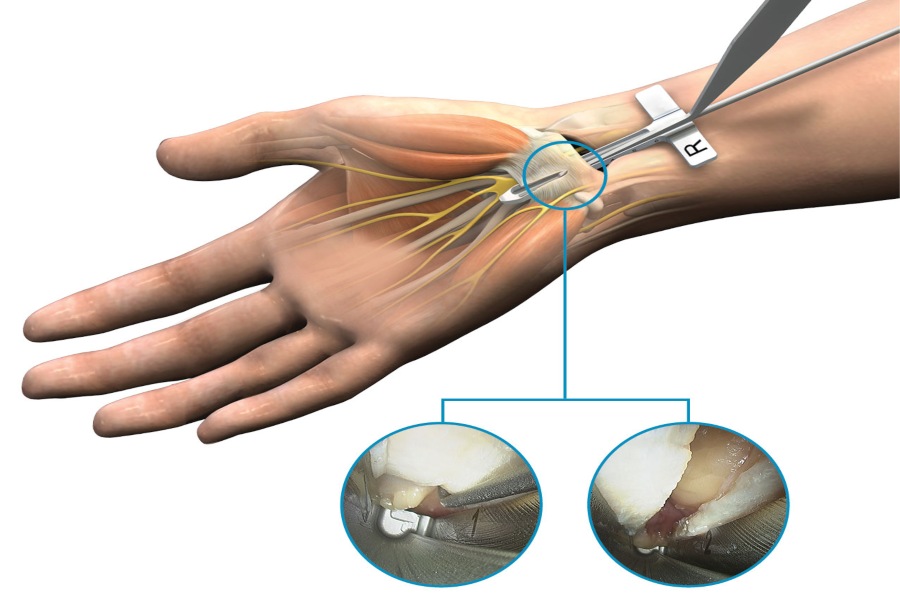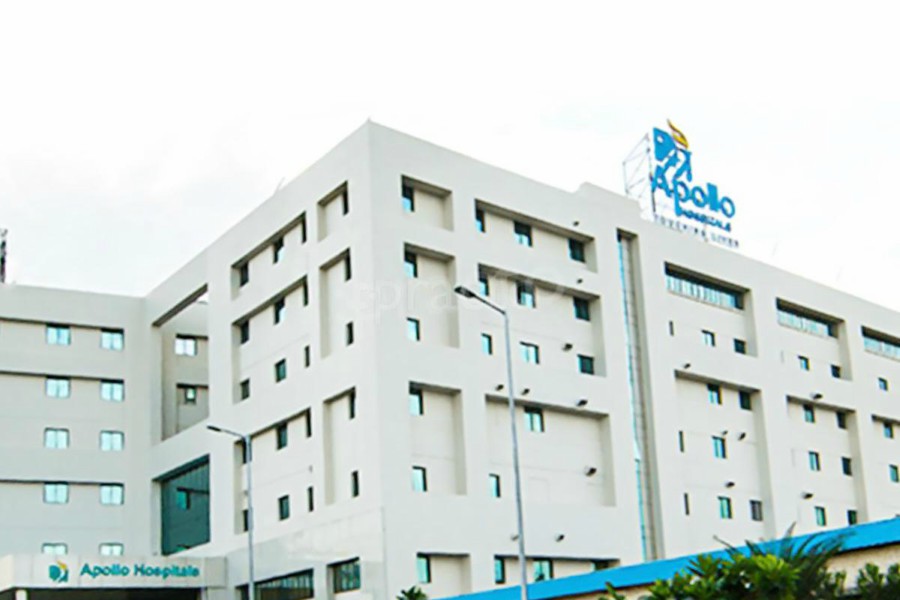
Carpal tunnel release is a surgical procedure used for the treatment of carpal tunnel syndrome. Carpal tunnel is a narrow channel in the wrist, formed by the carpal ligament on the top and wrist bones in the bottom. The median nerve and tendons, which help the fingers to move, pass through this channel. When there is an injury to the wrist, the tissues within the tunnel swell and compress the median nerve, thereby causing carpal tunnel syndrome. This nerve compression can cause symptoms like pain, numbness, tingling sensation, weakness, or loss of function of hand or wrist.
Overview
A carpal tunnel release surgery aims to decrease compression on the median nerve by cutting the carpal ligament. This provides more space for the median nerve and the tendons in the tunnel, and thus improving pain and hand function.
ELIGIBILITY
After the diagnosis of carpal tunnel syndrome, the doctor will prefer the nonsurgical treatments (like over-the-counter pain killers, steroids or wrist splints), especially during the early stage of the condition.
Carpal tunnel release is considered when:
- The symptoms persist despite a long period of nonsurgical treatment.
- The symptoms have lasted for 6 months or more with no relief.
- There are severe symptoms, such as no strength in the thumb, loss of coordination or sensation in the fingers or hand, which limit the regular daily activities.
- The median nerve is damaged or is at risk of damage; nerve damage can be indicated by the loss of finger or hand function and the nerve test results.
PREPARATION BEFORE PROCEDURE
The following guidelines will help you prepare for the surgery:
- Inform your doctor what medicines you are taking, including over-the-counter medicines, herbs, vitamins or other supplements.
- You may be asked to stop taking blood-thinning medications like aspirin, ibuprofen, or naproxen.
- If you smoke, quit smoking before the surgery as it can delay healing.
- An electrocardiogram or some blood tests may be done before surgery.
- You may be asked not to eat or drink anything 6 to 12 hours before the surgery.
- Tell your doctor if you have fever, cold, flu, herpes breakout, or other conditions. If these conditions occur, the surgery will be postponed.
- Based on your condition, other instructions may be given to prepare for the surgery. The doctor may also inform what medicines you can take before the surgery.
PROCEDURE TYPE
There are two main approaches for carpal tunnel release:
- Open carpal tunnel release: This surgery involves making an incision at the wrist to cut the carpal ligament and relieve pressure on the median nerve.
- Endoscopic carpal tunnel release: This procedure involves inserting a thin, flexible tube that includes a camera, which allows the doctor to locate the carpal ligament. Through another small cut, small tools are inserted in the wrist to cut the ligament.
ABOUT PROCEDURE
You will be asked to lie comfortably on your back with your arm stretched out on the side on an operating board. You may have a tourniquet, a tight cuff that stops blood flow, at the top of your arm.
A local anaesthesia is given to numb the hand and to prevent any discomfort during the surgery. Then, the tourniquet is inflated to completely stop the blood flow in your arm.
The surgeon will make an incision (the number and size of the incision depend on the approach of the procedure) near the bottom of the palm and cut the carpal ligament to release the median nerve compression. Then, the incision is closed by stitches, and a bandage is applied. To immobilise your wrist, your hand and wrist will be heavily wrapped with a bandage or a splint will be placed.
After the surgery, you will be monitored for a short period, and then you can go home. If there are any rare conditions or complications during the procedure, you may be asked to stay overnight in the hospital.
POST-PROCEDURE CARE
The splint or bandage will remain on your wrist for a week or two. Usually, another appointment will be scheduled to remove the splint or bandage. During this period, you can move the fingers to prevent stiffness.
Your hand and wrist will probably pain after surgery, which can be managed by oral pain killers. You may be advised to place the affected hand in an elevated position while sleeping to help reduce swelling.
After the splint removal, you may undergo physical therapy to improve the hand and wrist movement, speed up the healing process and strengthen the area. Sometimes, you may need to use the splint for 1 month or more, after the surgery.
The recovery period can vary from a few days to months. Your doctor will discuss with you about the activities you can do after surgery and when you can return to work.
RECOVERY TIPS
Although the recovery period may vary for different individuals, here’s what you can do to ensure a healthy and speedy recovery:
- Have a healthy, balanced diet to obtain all the nutrients that your body needs to heal.
- Stop smoking to improve blood circulation and breathing and enhance the recovery process.
- Keep your friends and family close to help you do daily tasks such as lifting heavy objects, and to help you cope emotionally.
- Return to your normal activities gradually.
FACTORS AFFECTING COST
Although the recovery period may vary for different individuals, here’s what you can do to ensure a healthy and speedy recovery:
- Have a healthy, balanced diet to obtain all the nutrients that your body needs to heal.
- Stop smoking to improve blood circulation and breathing and enhance the recovery process.
- Keep your friends and family close to help you do daily tasks such as lifting heavy objects, and to help you cope emotionally.
- Return to your normal activities gradually.
FAQ
Call your doctor if you have any of the following symptoms:
- Fever
- Increased pain near the incision
- Redness, bleeding, swelling, or other fluid leaks from the incision
The risks and complications associated with carpal tunnel release surgery are very rare. Some of the complications include:
- Nerve damage (occurs in less than 1% surgeries)
- Other tissue damage
- Infection
- Bleeding
Some side-effects of carpal tunnel release are:
- Pain and discomfort
- Stiffness
- Swelling
- Tenderness near the scar
- Weaker grip than before
After a carpal tunnel release surgery, squeezing foam balls may slow down the recovery if done too much. Thus, it is advised to ask your doctor about the intensity, frequency and from when you can do this exercise.
The handgrip will return to as before by 6 to 12 weeks, as the scar heals.
The surgery usually takes around 20 mins, but it can vary based on the individuals’ condition and the approach of the surgery.


 Best Hospitals
Best Hospitals













